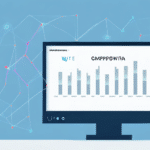Importance of Fast Page Load Times in E-Commerce
Page load time is a critical factor influencing the success of your e-commerce business. Studies show that page load time significantly affects conversion rates. According to Google's research, a delay of just one second in mobile load times can impact conversions by up to 20%. As online shoppers' attention spans continue to decrease, ensuring a fast and seamless browsing experience is more important than ever.
Impact on User Experience and Sales
Slow loading pages can lead to higher bounce rates, lower engagement levels, and ultimately fewer conversions. Potential customers expect a swift and uninterrupted experience. If they encounter delays, they may become frustrated and leave your site, resulting in lost sales and decreased revenue.
Effect on Search Engine Rankings
Search engines like Google prioritize websites that offer a better user experience, which includes fast load times. A slow website can negatively impact your search engine rankings, making it harder for potential customers to find your site through organic search.
Mobile Performance
With the increasing number of users accessing e-commerce sites via mobile devices, optimizing for mobile performance is crucial. Slow load times on mobile can lead to a poor user experience, reducing mobile traffic and sales.
Key Metrics for Measuring Page Load Time
Understanding and monitoring key metrics is essential for assessing and improving your website's performance. The main metrics to consider include:
- Time to First Byte (TTFB): The time it takes for the server to respond to a user's request.
- First Contentful Paint (FCP): The time it takes for the first piece of content to appear on the screen.
- Time to Interactive (TTI): The time it takes for the page to become fully interactive.
- Bounce Rate: The percentage of visitors who leave your site after viewing only one page.
These metrics provide insights into different aspects of your site's performance and help identify areas that need optimization.
Common Causes of Slow Page Load Times
Several factors can contribute to slower page load times. Identifying and addressing these can significantly enhance your website's performance:
Large Images and Videos
High-resolution images and videos can consume substantial bandwidth, slowing down page loading. Optimizing these media files by compressing them without compromising quality can improve load times.
Third-Party Scripts and Plugins
While third-party scripts and plugins can add valuable functionality, they can also introduce additional load time. Regularly reviewing and removing unnecessary scripts can enhance performance.
Excessive HTTP Requests
Each resource on your page, such as images, scripts, and stylesheets, requires an HTTP request. A high number of requests can delay page load times. Consolidating resources and minimizing requests can help.
Server Performance
The performance of your web hosting server plays a crucial role in page load times. Slow servers or those experiencing high traffic can lead to delays in delivering content to users.
Optimization Strategies for Page Load Time
Implementing effective optimization strategies can significantly reduce page load times, enhancing user experience and boosting conversions:
Image and Video Optimization
Compressing images and videos to reduce file sizes without sacrificing quality can speed up load times. Tools like TinyPNG and Squoosh are useful for this purpose.
Using Content Delivery Networks (CDN)
A CDN distributes your website's content across multiple servers worldwide, reducing the distance between users and the server. This can dramatically improve load times, especially for international visitors.
Minimizing HTTP Requests
Reducing the number of HTTP requests by combining CSS and JavaScript files, using CSS sprites, and minimizing external resources can streamline load processes.
Code Optimization
Minifying CSS, JavaScript, and HTML files by removing unnecessary characters and spaces can decrease file sizes, leading to faster load times.
Lazy Loading
Lazy loading delays the loading of non-critical resources until they are needed, reducing initial load time and improving performance.
Web Hosting Considerations
The choice of web hosting can significantly impact your site's load times. Options include shared hosting, virtual private servers (VPS), dedicated hosting, and cloud hosting:
- Shared Hosting: Cost-effective but shares resources with other websites, potentially leading to slower performance.
- VPS Hosting: Offers dedicated resources, improving performance over shared hosting.
- Dedicated Hosting: Provides exclusive use of a server, ensuring optimal performance.
- Cloud Hosting: Scalable and reliable, offering resources on-demand to handle traffic spikes.
Additionally, using a reputable hosting provider with robust infrastructure and support can enhance your site's performance.
Tools for Monitoring Performance
Utilizing performance testing tools helps in regularly monitoring and improving page load times. Some of the most effective tools include:
- Google PageSpeed Insights: Analyzes your site's performance and provides optimization suggestions.
- GTmetrix: Offers detailed reports on site speed and performance.
- WebPageTest: Allows testing of your site's load time from different locations and browsers.
- Pingdom: Monitors website performance and uptime.
Best Practices to Maintain Fast Page Load Times
Maintaining optimal page load times involves ongoing efforts and adherence to best practices:
- Regular Performance Monitoring: Continuously track your site's performance to identify and address issues promptly.
- Clean and Optimized Code: Ensure your site's code is streamlined and free of unnecessary elements.
- Update CMS and Plugins: Keep your content management system and plugins updated to benefit from performance improvements and security patches.
- Use Website Monitoring Services: Implement services that alert you to performance drops or downtime, allowing for quick resolution.
Case Studies: Successful E-Commerce Sites with Fast Page Load Times
Real-world examples illustrate the benefits of fast page load times:
- Amazon: Reported a 1% increase in revenue for every 100 milliseconds of load time reduction.
- Walmart: Experienced a 2% increase in conversions with each one-second improvement in page load time.
These cases demonstrate that investment in optimizing page load times can yield significant returns in revenue and customer satisfaction.
Future Trends in E-Commerce Page Load Time Optimization
As technology evolves, so do the strategies for optimizing page load times. Key trends to watch include:
- Progressive Web Apps (PWA): Providing a native app-like experience on the web, enhancing load speeds and user engagement.
- Machine Learning and AI: Utilizing artificial intelligence to dynamically optimize page load times based on user behavior and device.
- Voice Search Optimization: Adapting to the rise of voice assistants by ensuring fast and efficient responses to voice queries.
Staying ahead of these trends will help e-commerce businesses maintain high performance and meet evolving user expectations.
In conclusion, measuring and optimizing page load time is essential for the success of your e-commerce operations. By implementing best practices, regularly monitoring performance, and addressing factors that contribute to slow load times, you can enhance user experience, boost conversions, and improve your site's visibility in search engine rankings.






















